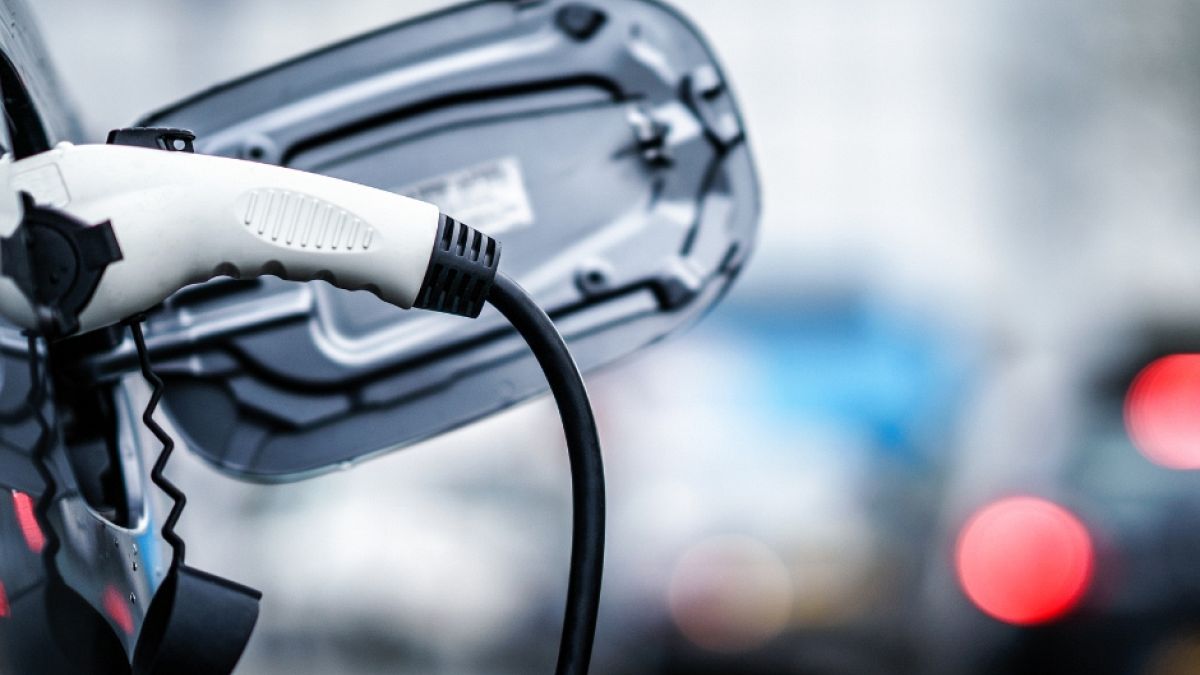Skyrocketing energy bills have pushed the price of running electric cars to new heights. But that does not mean you need to ditch yours.
Electric vehicles (EV) were in the headlines last month when it was revealed they are out-selling their diesel and petrol-powered rivals for the first time.
Sales in 2022 defied grim expectations, undented by runaway inflation amid the war in Ukraine, meaning more people than ever are plugging in and charging up.
But there is an issue.
Skyrocketing energy bills have pushed charging prices to new heights, with some warning this could scupper a greener, battery-powered future.
EU households had to pay on average 72 per cent more for each kWh of electricity than the previous year, as of September 2022.
With this in mind, Euronews Green has devised this short and simple guide to help keep EV costs down during a biting cost of living crisis.
Charge your EV at work
The home remains the most common place to charge.
Yet, this pattern is changing, with 40% of Europeans reporting they now charge their EVs at work.
According to EV experts Dover Fueling Solutions, juicing up at work can be a “cost-effective solution” for people trying to tighten their belts (and carbon footprints).
With government schemes helping to cover installation costs, some businesses have installed EV charging points in a bid to improve their green image, while seemingly reducing the environmental impact of their staff and operations.
Charge EVs overnight to save money
If you can manage to stay awake long enough, charging overnight on off-peak rates can save a pretty penny.
Electricity is cheapest at around 2 am in most places. But don’t worry, chargers can be set to power up then, ensuring a good night’s sleep.
Choose charge rate carefully
Charging at home is always cheaper. However, if you must charge in public, choose a slower AC rate to save money.
A record number of public electric car chargers were installed by British companies in 2022 as they race to dominate a fast-growing and potentially lucrative market.
There were more than 8,700 public chargers installed in the UK last year, bringing the total to more than 37,000, says data company Zap-Map.
Also be on the lookout for cheaper community charging points.
Parking app Just Park has reported a 77 per cent increase in the number of these people-led alternatives, with more and more EV drivers sharing their home solar systems with the wider community.
Don’t charge that battery any more than you need to
The golden rule is: don't charge every night.
Though 77 per cent of European EV owners have charging facilities at home that does not mean they should be used all the time.
The average EV has a range of around 350 km, but most drivers don’t travel further than 30km per day, according to Dover Fueling Solutions.
Only charge your electric car when it’s really needed, and watch out for traps.
Supermarkets have cottoned on to the EV trend and are increasingly installing charging stations in their car parks.
French retail giant Carrefour has vowed to install 5000 charging points outside their stores by 2025, while Aldi continues to introduce EV charging facilities across Germany.
While this may be a welcome development for most, modernising the traditional supermarket experience, try not to overcharge by lingering too long in the store – no matter how nice the cafe is.
100% battery isn’t always best
The first and last parts of a battery take the longest to charge.
Tweak your smart charger - if you have one - to ensure it stops charging at around 80%.
Try not to run your EV down below 20% to maintain optimum battery health and improve the lifespan of your car. This might save some dosh, too.
Be careful not to drain your battery with unnecessary energy usage
Car batteries are drained by many things, most of which are avoidable.
Deflated tyres can use up to 6% more power, sapping your battery. Meanwhile, drivers should also use heating and stereos sparingly.
One study shows that using air conditioning when driving an EV may decrease its range by 17 per cent.
Big savings can be made through relatively small choices in the car.



